Stranger Things
On citizen astronomers and foreign bodies
Don’t laugh. They’re up there. Somewhere.
The Pig-Out Restaurant in the southern Free State town of Smithfield was wildly popular back in 2010. Where else in the Karoo could you enjoy a brace of lamb chops under a whirring windmill while tracking the boundless Out There for extraterrestrial life?
In the front yard of the old home that doubled as the Pig Out and the UFO Research Centre were two huge satellite dishes pointing up at the sky. And inside the house was a skinny man with wild hair: Henk Swanepoel.
Henk was an amateur astronomer who loved the movie Indiana Jones, drank Jameson’s, was a fan of The Hitchhiker’s Guide to the Galaxy and could eat croissants with basil pesto and tomato all day long.
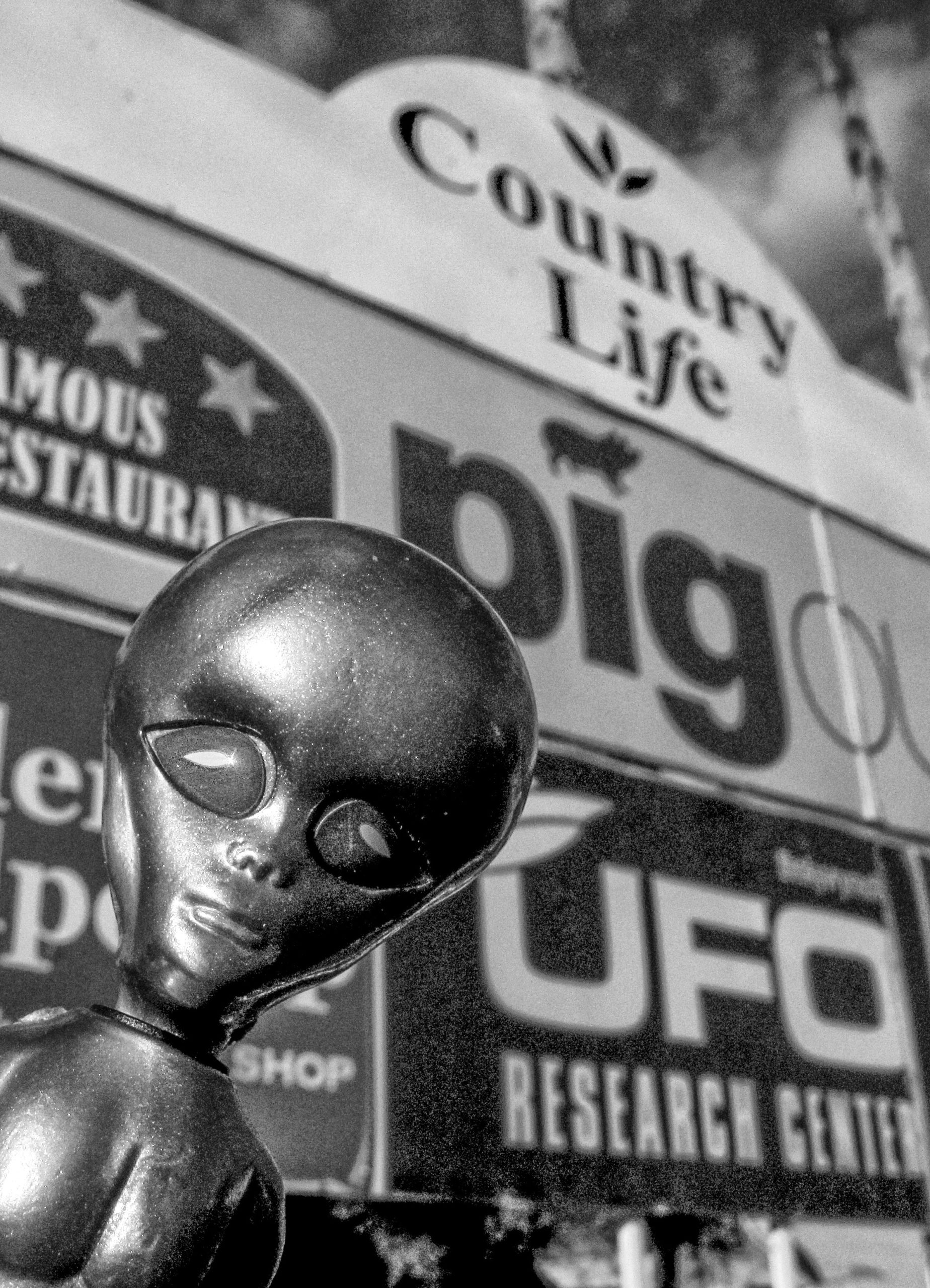
A surprise visitor to the UFO Research Centre in Smithfield back in 2010. Image: Chris Marais
One room was linked to the Universe and it emitted a steady stream of pings and blips. On the other side was a kitchen where, judging by aromas, another kind of magic was being cooked up. The centre had three computer screens, all showing strange signals, like an elaborate electrocardiogram monitoring the skies.
Henk explained that one listened to the storms raging on Jupiter, one listened to the sun, and the other was listening to the background hiss of the Universe.
Citizen astronomers
His business card described his mission as “The Search for Complex Signals”. He was living in a time when amateur alien hunters could make as much of a contribution as the professionals. The real astronomers were devolving the grunge work, the repetitive, mostly unrewarding stuff, to amateurs.
For example, they tracked the weather on the sun and Jupiter. And they checked out for complex signals, anything other than the background static sound that was basically the hiss of the Universe moving apart, the faint remains of the unimaginably huge explosion that was the Big Bang. And all of that.

Aliens in the Karoo – or the most-welcome ‘five o’clock Boeing’ passing overhead? Image: Chris Marais
Radio astronomy, which lends itself to this intergalactic investigation, is cheaper than the optical variety. Henk tuned into 1.4 gigahertz, which was “the frequency something would use to say ‘I’m here’.” It’s the quiet part of the spectrum.
“I have picked up anomalies, but later on found out it’s a bloody satellite overhead.”
Henk belonged to Nasa’s Radio Jove project, which does research on Jupiter, and of course, the SETI’s (Search for Extraterrestrial Intelligence) Project Argus.
His motivation: “Well, if we do find something major, it will have a profound effect on the world. And if we don’t find any life outside Earth, it’s actually equally profound. It shows just how special we are.
“The chances are that our first contact with life outside will be through robotic intelligence, rather than biological intelligence. It makes more sense to send nanobots to go and explore than to risk a human life.”
In the same way, obviously, as we have done on sending unmanned spacecraft to Mars.

Even Route 62 has embraced the UFO culture of the Karoo. Image: Chris Marais
UFO sighting protocols
We sat at his hi-tech desk, and he turned up the volume on the Jupiter tracker. It sounds like the giant planet was experiencing a pebble storm.
“It’s probably easier to predict the weather on Jupiter than the weather on Earth,” grinned Henk.
So what do you do if you detect something odd, but aren’t sure whether it’s a satellite, a night-time hot-air balloon armada – or an alien visitor? During the Cold War, said Henk, the North American Aerospace Defence Command (with the weird acronym, Norad) was set up. It tracks anything bigger than a baseball in the space above Earth. It keeps a close watch on space junk and all kinds of satellites.
“So before you alert the press with your big news, you first check with them.”
In fact, there’s a whole “Discovery Protocol”. Once you’ve ruled out all other possibilities, and checked with Norad and then with SETI’s Project Argus, you may be onto something. Project Argus involves the combined and coordinated use of thousands of small radio telescopes worldwide, owned and operated by amateurs, searching for “interesting signals”.
“But there’s a kind of gentlemen’s agreement not to run to the media first. Also, you must pick up the signal at least three times, coming from the same place.”
Henk was a true Karoo eccentric. In his office was a book called The Idiot’s Guide to String Theory and a small poster advertising Thomas Dolby’s album Aliens Ate my Buick. Also several other books: Alien Abduction Mysteries, and Aliens: Encounters with the Unexplained.
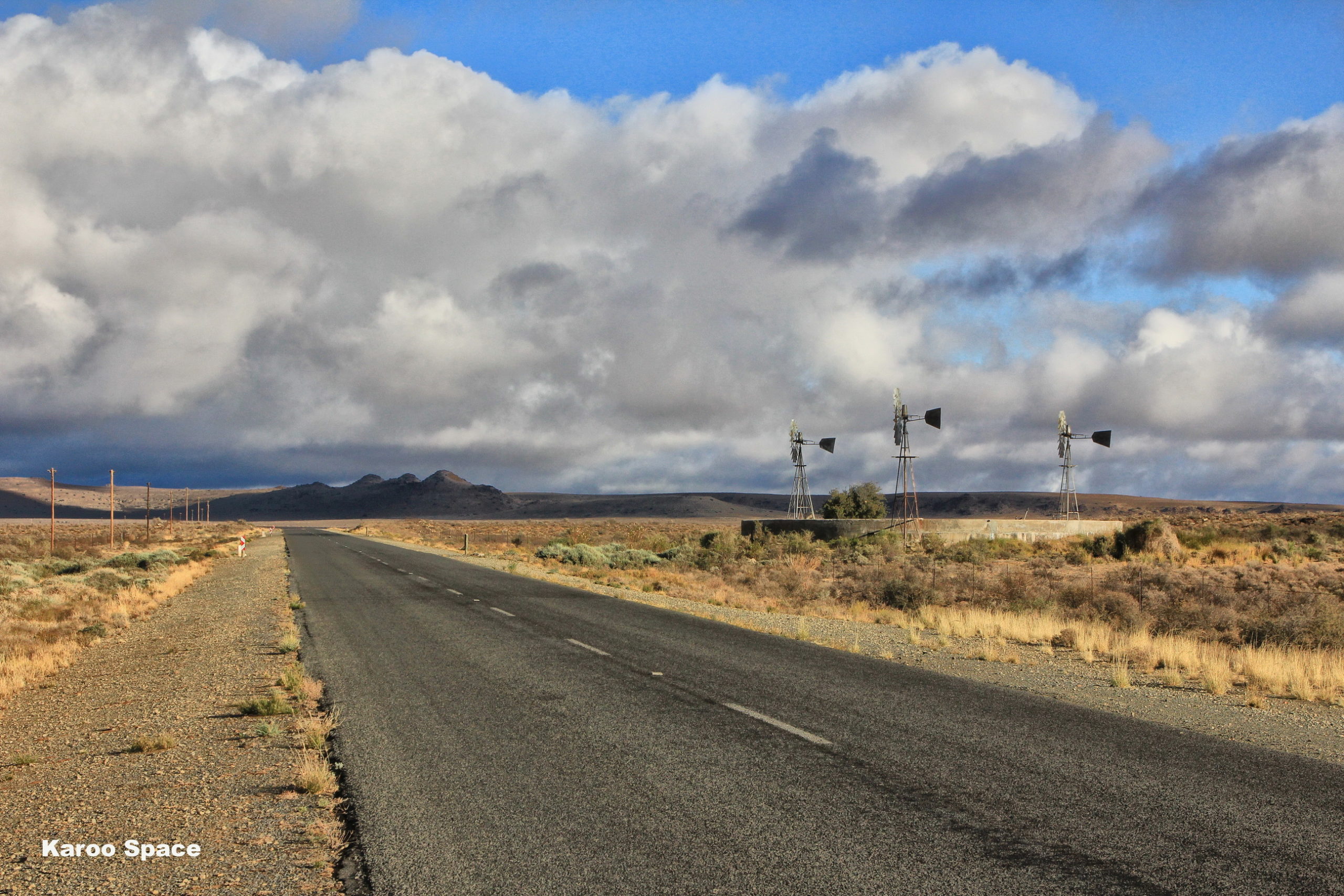
The skies above Route 63, between Loxton and Victoria West in the Northern Cape. Image: Chris Marais
Take photos, people!
He often spoke to people who thought they had seen UFOs. In fact he wanted to be contacted.
“I especially enjoy meeting pilots, because they’re mostly intelligent, observant people who are familiar with the normal stuff you might see in the sky, the weather anomalies.
“People usually talk about bright lights in the sky and strange planes. They see things land and everything goes quiet. Or they’ll say: ‘I’ll tell you what I saw, but don’t tell anyone else.’ Then there are people who think they’ve been abducted.”
Some folks just need therapy, said Henk.
“Listen, people! You’ve all got cameras these days. If you see something weird, take a picture. Try to calculate how big it is, how far away, and exactly where. And if you are abducted by alien spacecraft, for heaven’s sake, bring back a memento.”
Unfortunately, the popular press is quite pervasive when it comes to observations.
“For example, there’ll be an image drawn, say, of that grey alien with big eyes and a big head. Then suddenly that was the kind of alien everyone was seeing.”
Had Henk seen any aliens?
He sighed. “No. I wish I could. I’d love to be sexually abused by a couple of three-breasted women with coneheads, but I don’t think that will happen.”
The Sutherland setup
There are, however, alluringly credible accounts. Not too long ago, some senior tourists saw something come down between here and Rouxville, but by the time they got close it was gone. The next morning they found burn marks and the CSIR came and took samples. Henk was working for the SABC at the time. No one heard anything further about the Rouxville Landing.
“I would love to get physical proof of life out there. People think people like me do pseudoscience, but it’s real. At the moment there is no credible South African centre where you can send your reports. I have, however, a good questionnaire for those who have encountered alien life.”
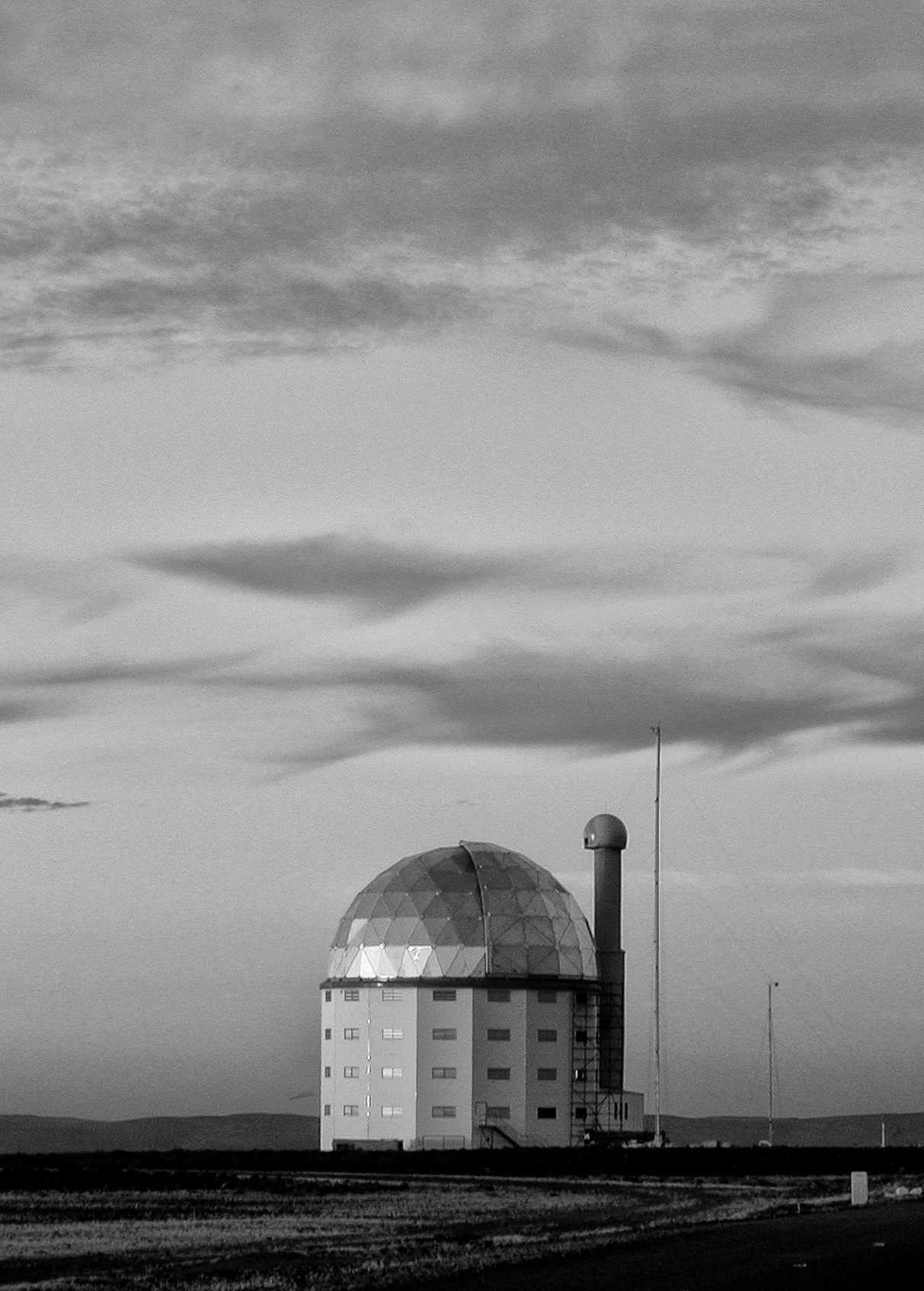
SA Large Telescope outside Sutherland – constant eyes on the sky. Image: Chris Marais
A woman came in for coffee and chips. She said she once spotted a UFO. She and her husband were in the south of France. She was lying in a hammock and then she saw lights in the sky.
“They would stop, then go, then stop, and went off in a zigzag. I said to my husband, it can only be a UFO.”
Back in 2000, Jules and I visited the Sutherland observatories on the hill outside the village, and fell into conversation with one of the observers from the South African Astronomical Observatory (SAAO), Dave Kilkenny.
“No one knew how to spell my name before South Africa started importing Irish beer,” he remarked dryly. And then we asked him the key question:
“Do you get a lot of ufologists calling here?”
“No,” he replied. “They don’t like us because we don’t see what they would like us to see.”
“Obviously you don’t get the calls,” grumbled Schagne van der Merwe, our guide. “Like, ‘I’m on my stoep, looking up at the sky, and I can see a really, really bright light’,” she mimics. “So I ask them, where are you looking? And they tell me, ‘I told you already. I’m on my stoep, looking up… ’”
The Rosmead incident
Karoo farmers and policemen on country cases have often reported seeing orange lights dancing about the sky in a whimsical, frolicking manner. Back in 1975 a Loxton farmer actually saw four aliens in a “funny caravan” and reported that they were “a bit on the small side”. Williston in the Far West markets itself as something of a UFO stopover as well, but that’s really because they’re close to all things astronomical in Sutherland.
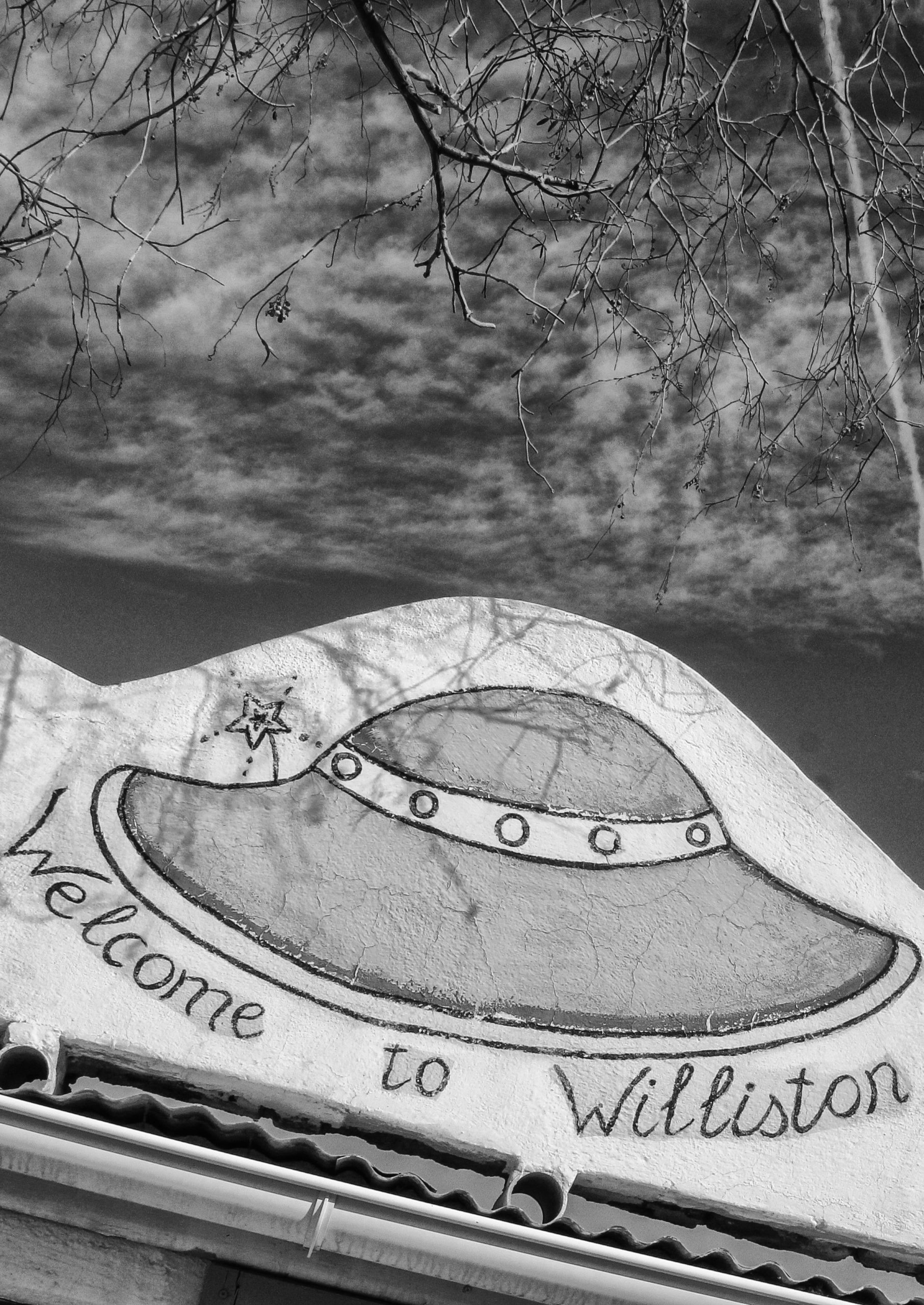
Williston welcomes all aliens – from the city or from the skies above. Image: Chris Marais
Shortly after we came to settle here in the Eastern Cape Karoo Heartland in 2007, we heard about The Rosmead Landing.
There was a time, not so long ago, when tennis was the Sport of Kings in the Karoo. So the little railway village of Rosmead outside Middelburg was understandably very proud of its newly built school tennis court in early 1971.
Back then, Rosmead was a thriving settlement, sporting a formidable rugby team, huge fuel storage tanks and a military camp.
On the night of 12 November 1972, a number of locals saw a bright light zig-zagging across the Karoo sky. The light (also reported as a series of moving red lights) seemed to descend on the school tennis court, and then disappear.
Noted Middelburg historian Hennie Coetzee was living in Rosmead at the time. He, too, saw the strange lights in the sky above his village.
Some years later the author Cynthia Hind visited Rosmead, as part of the research into her book, UFOs – African Encounters.
Ms Hind interviewed Hennie Coetzee and a number of Rosmeaders about the incident.
It seems that on the Monday after the sighting, a number of scorch marks and holes were found in the tar of the tennis court. Trees near the court had died, and their leaves bore burn marks. A large rock had been flung some distance away.
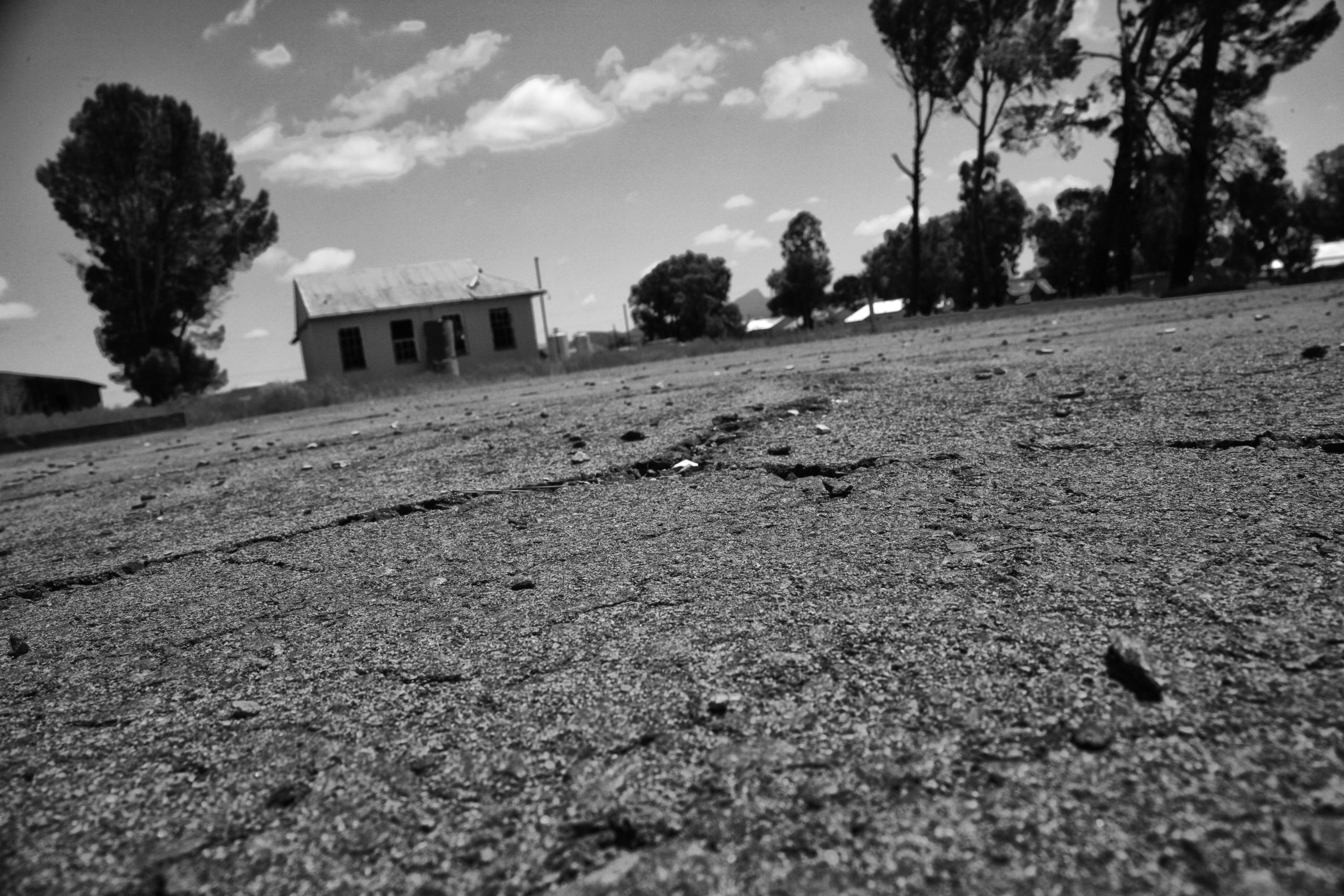
A 2007 shot of the Rosmead tennis court where aliens may (or may not) have landed. Image: Chris Marais
The tennis court was locked and some of the chunks of tar that had been ripped out were sent off to the SA Police laboratories in Pretoria.
Colonel Lothar Neethling, head of forensics, refuted any possible “UFO” landing theory. He said “nothing unusual” had been found in the samples. His theory was that local vandals had taken to the tennis court with pick-axes.
Other local police sources were unconvinced, and believed that no human could have done such damage to the court surface.
Traces of the tar used on the tennis court were found embedded in nearby trees, and small chunks of tar were found lying on nearby ridges.
To many, it seemed an alien craft had hovered over Rosmead, landed briefly and then, using its afterburners which disturbed the court surface, it simply took off into the dark night again.
Phonetically at least, the Rosmead Landing (or should that be the Rosmead Takeoff?) sounds a bit like the event that occurred near Roswell, New Mexico, in the US.
The Roswell Incident
Every July, Covid-19 restrictions notwithstanding, you’ll see hordes of Imperial Stormtroopers and an array of other characters from movies like Star Wars, Star Trek, The X-Files, Independence Day and Battlestar Galactica roaming the streets of Roswell, looking for an interplanetary rumble or, at the very least, a selfie photo-opp.
That’s because, over in New Mexico, they have deep respect (AKA sharp commercial opportunism AKA a sense of fun) for their alien landings – even if it’s all a storm in a rubber balloon. Allow me to explain.
On a day in July 1947, a “flying disc” landed on a ranch outside Roswell. Despite many civilian sightings claiming a definite alien landing, the US military said otherwise. First, they released a statement explaining that the disc in question had actually been a conventional weather balloon. Then, as the decades rolled by and the conspiracy theories grew bolder and bolder, the military admitted that the disc had been a nuclear test surveillance balloon from something called Project Mogul.
That, however, has not stopped the famous American Imagination. You’ve seen the movies. You watch Netflix. You know what I mean.
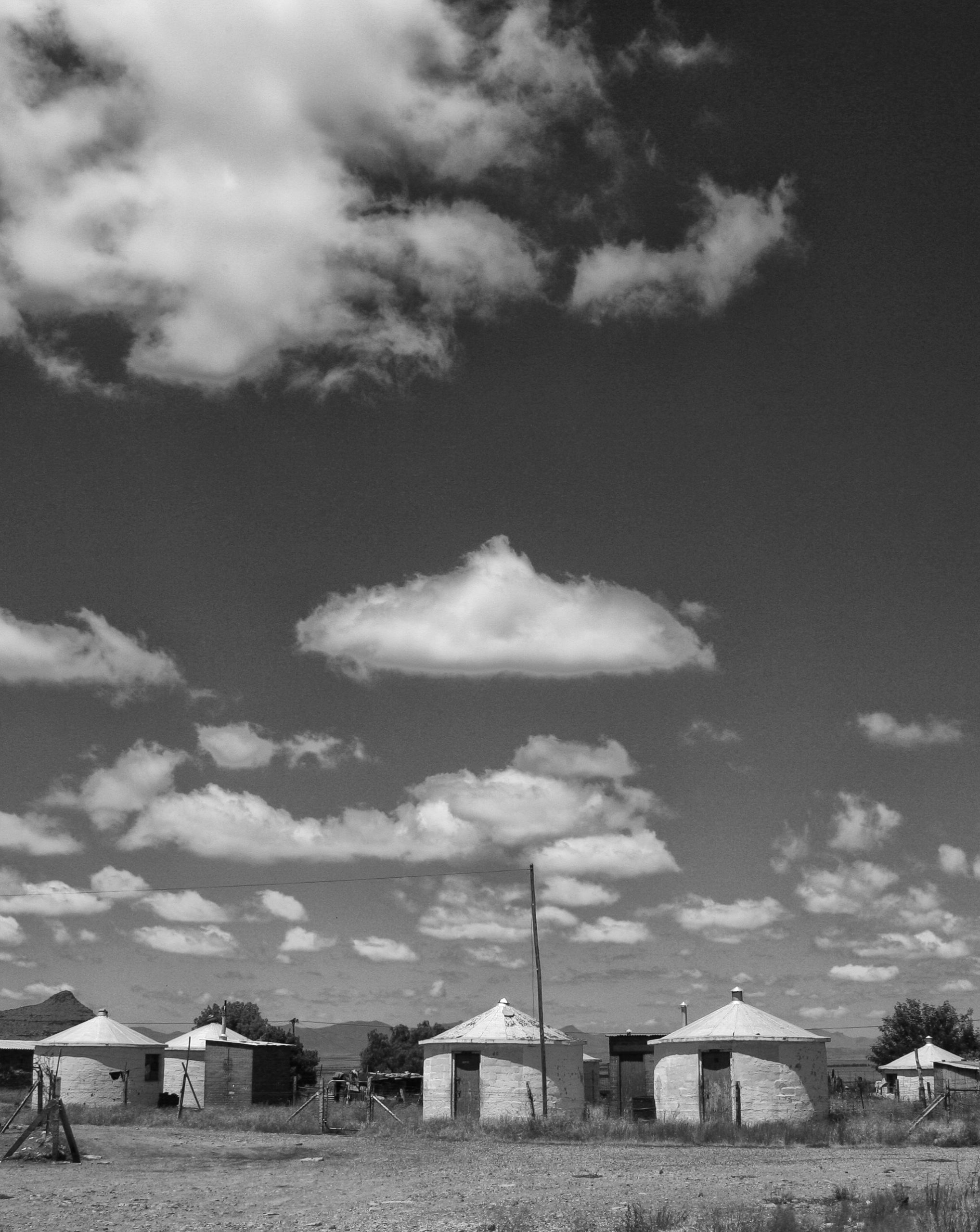
Even the clouds above Rosmead look suspiciously like alien craft hovering. Image: Chris Marais
Back home in the Karoo, there’s not much celebration of the Rosmead Landing/Takeoff. We tend to keep our aliens to ourselves, thank you very much.
SETI in the Karoo
Recently, we toured the giant Square Kilometre Array (SKA) project in the Northern Cape with one of the founders, Professor Justin Jonas of Rhodes University.
If you’re ever looking for the perfect desert set to shoot your next sci-fi epic, this is it. But make sure it’s a silent movie, so you don’t disturb the intricate operations of these mammoth ears on the heavens and their vast computer surveillance systems.
“What’s coming out of there right now is nearly equal to the entire global internet traffic volume,” said Professor Jonas. “It’s happening 24/7. Of course, the sky never turns off, so the telescopes are streaming data all the time. The equivalent of 64 full-length movies is being generated every second of every day, and it’s only going to grow.
“You’ve got to process that information very quickly, because you can’t hold onto it unless you compress it down. Nothing can store that kind of volume right now. But engineers are working on hyper-fast supercomputers, and unthrottling data flow rates.”
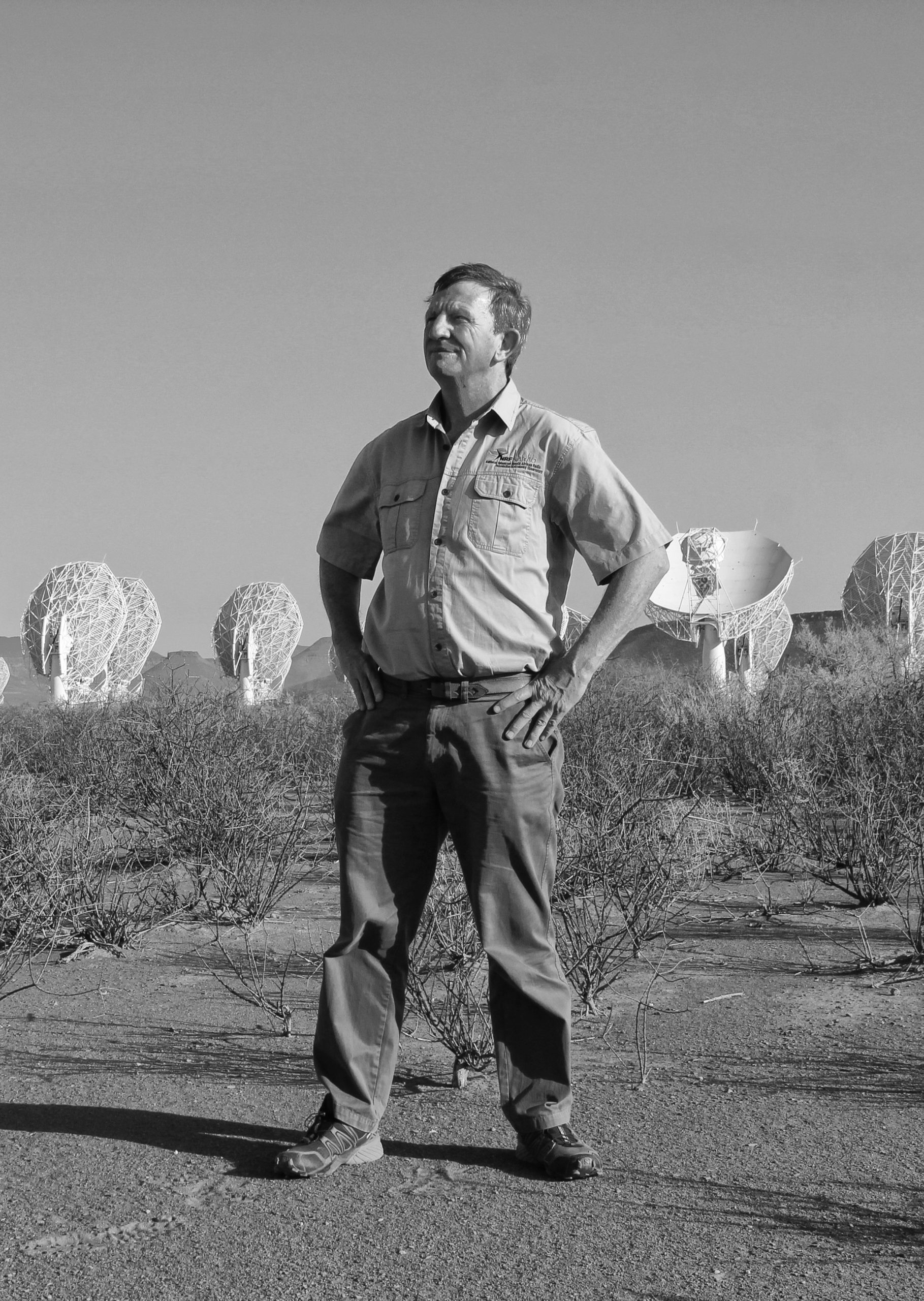
Professor Justin Jonas of SKA: looking for radio signatures in the skies above. Image: Chris Marais
Meanwhile, help is coming from an unexpected quarter. SETI’s Breakthrough Listen organisation has its own bank of extremely powerful computers in the underground bunker at SKA.
“We don’t schedule observations for them. They just take whatever is coming out of the telescope all of the time, no matter where it’s pointing, and use it for their purposes. It’s all serendipitous. They are what we call secondary commensal observers.
“We have two levels of observation. A primary observer is one who says: I want to look at that part of the sky – that’s my target. Then you get a secondary observer. Wherever the telescope is pointing, they observe and try to find transients, pulsars and other things that go ping or blip in the night.
“The SETI people are recording data non-stop, and looking for unusual signals. It would have to be something completely regular, but not like a pulsar which can also flash like clockwork. What would be a sure sign is a very narrow frequency signal, something like radar or a television transmission. The strongest signals we humans blast out are radar. It makes sense that another civilisation would have radar as well. You are looking for that signature.
“Some of the other scientists regard the SETI people as a little, um, eccentric. But they’re not blocking off anyone else’s time, so they’re tolerated. Of course, if something is detected, everyone and his dog will say they’re a SETI supporter.”
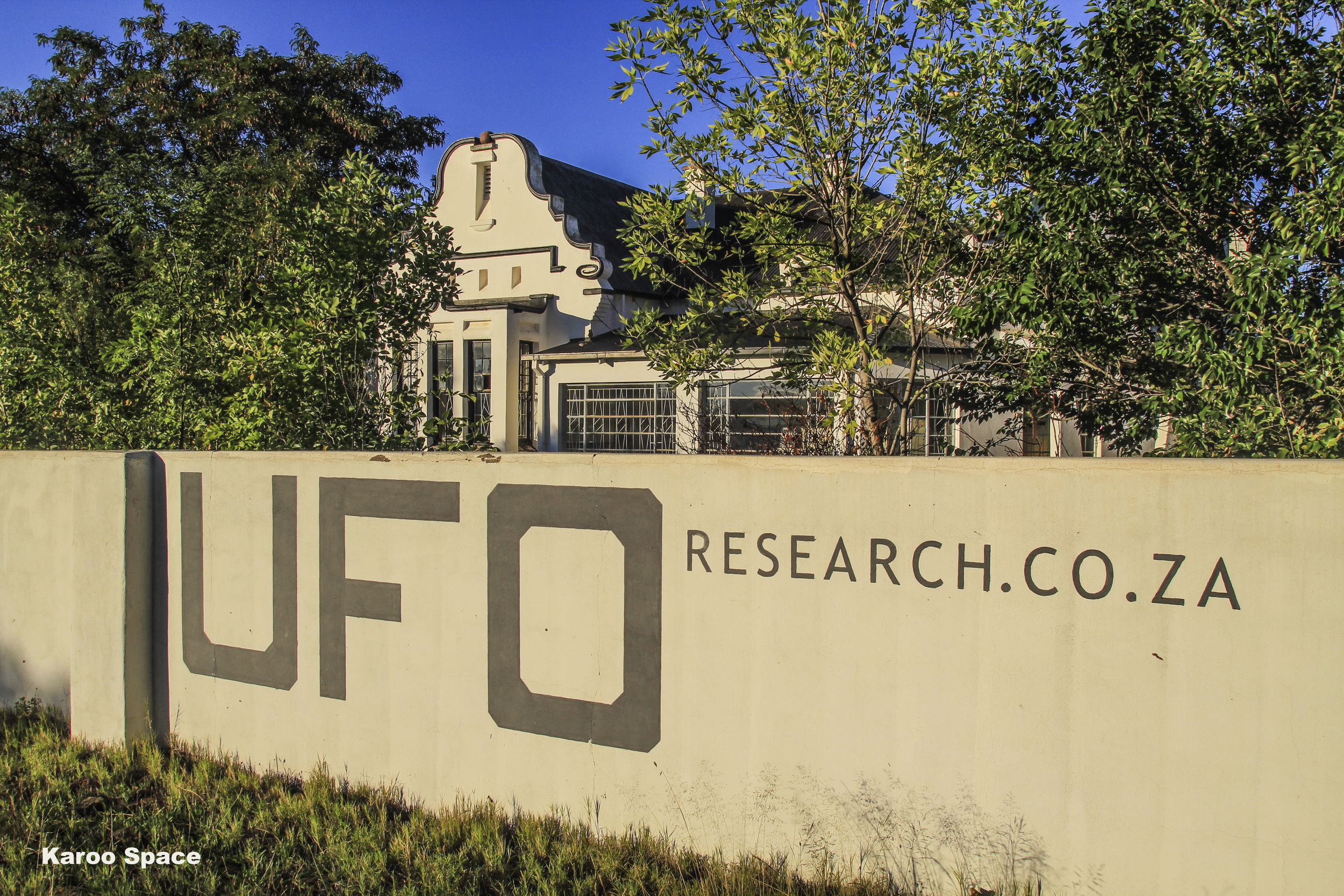
Image: Chris Marais
Some years after we first met Henk Swanepoel of the Alien Research Centre, we returned to Smithfield in the southern Free State. The sign on the wall outside his centre was still up but fading – the operation was closed and its colourful manager had left town.
So we say: “Henk Swanepoel, wherever you are, keep the faith! The truth is still out there… ” DM/ML
This is an excerpt from Karoo Roads II – More Tales from the Heartland, by Julienne du Toit and Chris Marais. For an author-signed, first-edition copy of their book, contact Julienne at [email protected]. For more stories, go to Karoo Space.
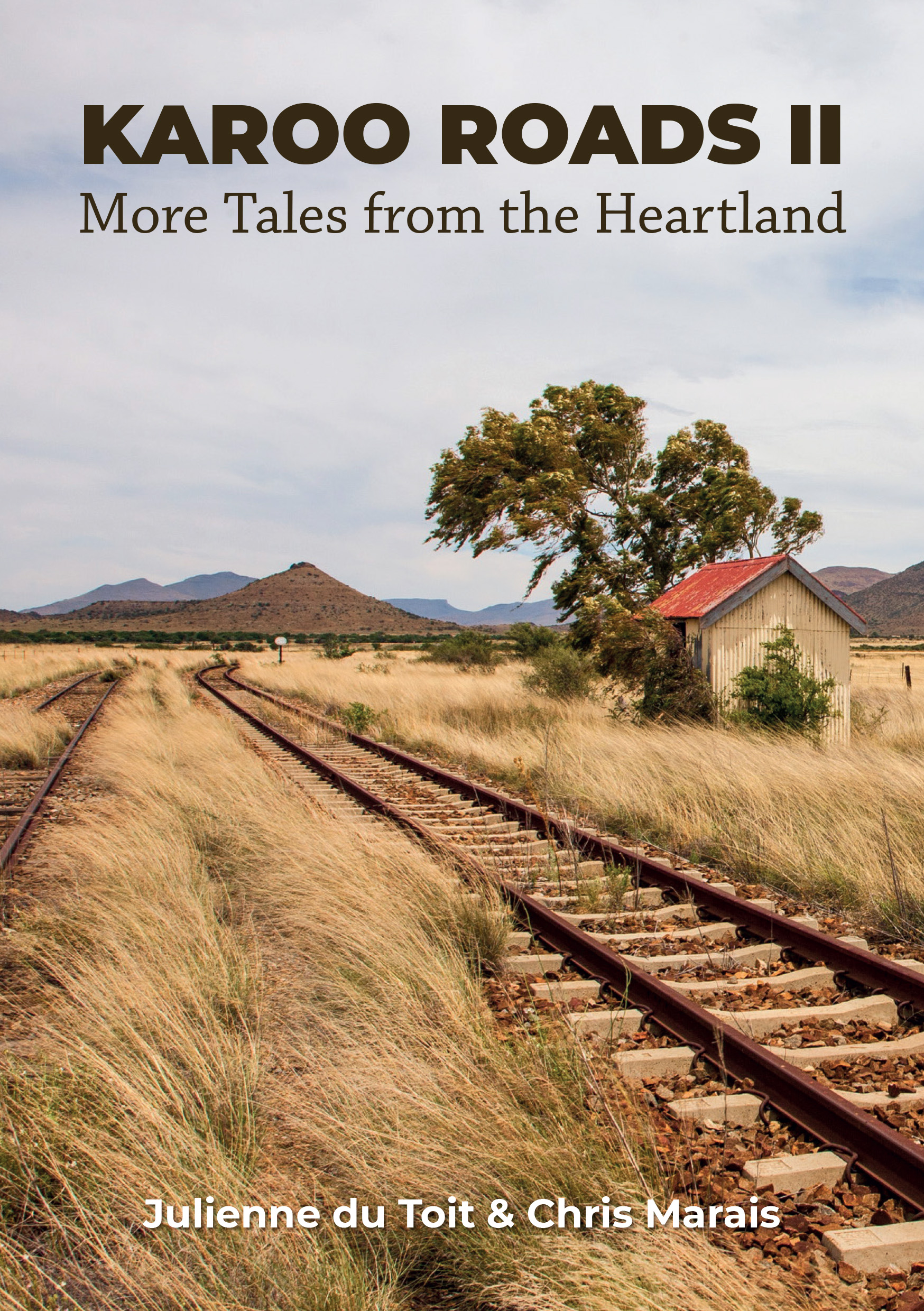
Karoo Roads II cover. Image: Supplied

















 Become an Insider
Become an Insider
SO good to read something that doesn’t involve politics or the plague. Thank you.
Karoo Roads I was a wonderful read. I hope II can match it.